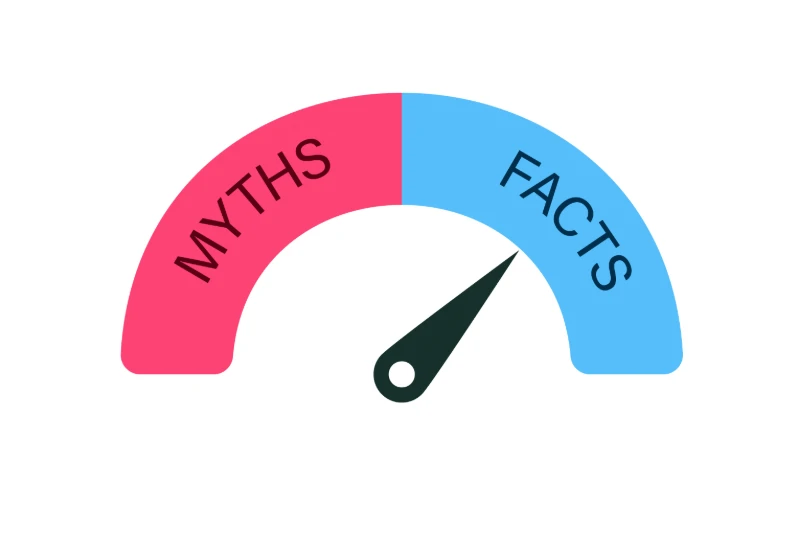When it comes to getting a mortgage, there’s no shortage of misinformation. Many homebuyers, especially…
Strategic Use of Bridge Loans in Phoenix Real Estate
Are you a real estate investor or homeowner looking for a flexible financing option? Look no further than bridge loans! Bridge loans are short-term loans that “bridge” the gap between financing needs. They can be used to finance the purchase of a new property while waiting for the sale of an existing one, or to make renovations before refinancing with long-term financing.
In this article, we will dive into what exactly bridge loans are and how they work in the Phoenix real estate market. We will explore their benefits, risks, and how they compare to traditional loans. By the end, you will have all the information you need to make an informed decision on whether a bridge loan is right for your real estate transaction in Phoenix.

Understanding Bridge Loans in Phoenix Real Estate
Understanding Bridge Loans in Phoenix Real Estate: Essential for real estate investors and homebuyers, bridge loans provide temporary financing bridging the gap between buying a new property and selling an old one. They offer leverage, especially in a seller’s market, and typically have a short timeline, ranging from a few months to a year. Crucial in scenarios requiring quick access to cash for a new home before selling the current property, understanding the process of obtaining bridge loans is vital.
Definition and Purpose of Bridge Loans
Bridge loans, as short-term financing options, provide immediate cash flow for securing new properties without waiting for old ones to sell. They offer financial flexibility to buyers and investors, alleviating financial strain by providing temporary financing for real estate investments. Understanding the terms and conditions associated with bridge loans is crucial for effective leverage. In high-demand markets, bridge loans are a good option for commercial real estate investors.
The Role of Bridge Loans in Real Estate
Bridge loans play a vital role in real estate transactions, especially in high-demand markets like Phoenix. The speed and flexibility of bridge loans make them an attractive financing option for real estate investors and homebuyers. These loans provide the liquidity needed to pursue new property acquisitions and bridge the financial gap between transactions. Understanding bridge loans is imperative for real estate investors as they offer quick access to temporary financing, leveraging the benefits of short-term financial solutions in real estate endeavors.
How Bridge Loans Work in the Mortgage Industry
Bridge loans serve as short-term financing options, allowing buyers to bridge the gap between the purchase of a new property and the sale of their current home. Securing a bridge loan entails a comprehensive assessment of the borrower’s financial standing and creditworthiness. Although they come with higher interest rates, bridge loans provide quick access to cash, making them valuable in real estate transactions. These loans are designed to offer temporary financing, providing buyers with the flexibility to secure new properties, leveraging home equity, and enabling swift real estate transactions.
Process of Obtaining a Bridge Loan
Obtaining a bridge loan involves evaluating the borrower’s financial standing and credit score. Despite higher interest rates, bridge loans provide quick access to cash, making them valuable in real estate transactions. The borrower’s net worth, liquidity, and collateral are crucial in securing bridge loans. Traditional and hard money lenders facilitate the process. Origination includes a comprehensive appraisal of the property’s value and the borrower’s financial situation. Understanding this process is essential for real estate investors seeking temporary financing for new acquisitions.
Terms and Conditions Associated With Bridge Loans
Navigating bridge loans involves understanding higher costs such as interest rates and fees compared to traditional mortgage loans. Critical factors include the loan amount, collateral, and timeline. Additionally, bridge loans often require a balloon payment, while clear financial obligations understanding is crucial. For real estate investors and homebuyers, comprehending these terms and conditions is imperative in making informed decisions. It’s essential to consider the borrower’s financial obligations, permanent financing, business plan, short term, and mortgage broker when obtaining bridge loans, ensuring a smooth process from closing to the new house.
Benefits of Bridge Loans in Real Estate Transactions
The speed and flexibility of bridge loans make them a valuable tool for real estate investors and homebuyers. Bridge loans provide quick access to temporary financing, enabling buyers to secure new properties promptly. These loans bridge the financial gap, offering buyers the liquidity needed to pursue new property acquisitions. Bridging gaps in financing, bridge loans provide financial relief to buyers navigating real estate transactions. The leverage offered by bridge loans makes them an attractive option, especially in high demand real estate markets.
Speed and Flexibility of Bridge Loans
When considering real estate deals, the speed and flexibility of bridge loans are crucial. These loans provide quick access to temporary financing, making them ideal for securing new properties promptly. The timeline for obtaining bridge loans is relatively short, typically ranging from a few months to a year, offering buyers the financial flexibility needed in real estate transactions. Bridge loans bridge the financial gap, offering liquidity to navigate real estate deals effectively, making them an attractive option for homebuyers and real estate investors.
Bridging Gaps in Financing
Bridging financial gaps, bridge loans provide the liquidity needed to secure new properties before selling current homes. These loans bridge the financial gap, offering buyers the flexibility to navigate real estate transactions seamlessly. Designed to bridge financing gaps, bridge loans enable buyers to pursue new real estate investments. The financial strain of real estate transactions can be alleviated through bridge loans, providing buyers with temporary financing. Bridge loans serve as a financial bridge, offering temporary financing to buyers in real estate transactions.
Potential Risks Associated With Bridge Loans
The risks associated with bridge loans can lead to increased financial costs for borrowers due to higher interest rates. Careful evaluation of financial capabilities is essential to avoid the risk of foreclosure. Understanding the cons of bridge loans, including higher costs and potential financial strain, is crucial. Evaluating the risks, such as the loan-to-value (LTV) ratio and recourse options, is vital for buyers and investors navigating real estate transactions. It’s important for borrowers to consider the potential impact of high interest rates and balloon payments.
High-interest Rates and Costs
When considering bridge loans, it’s important to be aware that they typically come with higher interest rates and costs compared to traditional loans. This means borrowers must carefully assess the financial implications of these higher costs before securing bridge financing. Understanding the impact of high interest rates on cash flow and overall financial situation is crucial. Evaluating the pros and cons, including the increased costs, is essential for making informed decisions about bridge loans.
Repayment Concerns
Understanding the financial obligations tied to bridge lending remains crucial for borrowers. Anticipating and planning for the balloon payment at the end of the short-term loan tenure is essential. Analyzing repayment concerns helps avoid potential financial strain or liquidity issues, making it vital for borrowers to establish a clear plan. Evaluating the repayment timeline and available options is equally important when assessing bridge loan terms, ensuring borrowers are well-informed and prepared to manage their financial commitments effectively.
Bridge Loans vs Traditional Loans
Understanding the differences between bridge loans and traditional loans is crucial in real estate transactions. Bridge loans offer rapid access to financing compared to traditional lenders, providing a competitive advantage in specific situations. Evaluating the type of loan that best fits the borrower’s needs is essential for informed decision-making. Analyzing the pros and cons of bridge loans versus traditional loans is necessary to make an informed choice. Real estate investors should consider the leverage and liquidity differences between bridge loans and traditional financing.
When to Choose Bridge Loans Over Traditional Loans
In seller’s markets with high demand, choosing bridge loans over traditional options can be advantageous. When buyers require temporary financing for new property purchases, bridge loans offer a practical solution. Understanding when to opt for bridge loans necessitates careful financial analysis to bridge the gap between purchasing a new home and selling the current one. For buyers whose financing needs are not met by traditional lenders, bridge loans provide a viable option.
Pros and Cons of Both Loan Types
Evaluating the advantages and disadvantages of bridge loans and traditional loans is essential for real estate investors. Understanding the benefits of bridge loans, such as quick access to financing, can provide an edge in real estate transactions. Similarly, analyzing the drawbacks of traditional loans, such as longer processing times, is crucial for guiding borrowers in their financing decisions. It’s important to weigh the pros and cons of both loan types against each other to make informed financing choices in real estate transactions.
How can Bridge Loans Give You an Edge in Phoenix Real Estate?
Bridge loans offer real estate investors in Phoenix a competitive advantage by providing quick access to financing for time-sensitive opportunities. With the ability to leverage bridge loans, investors can acquire commercial properties, gain flexibility, and make informed decisions in a highly competitive market. Understanding the benefits of bridge loans is crucial for gaining an edge in Phoenix real estate transactions.
Common Uses of Bridge Loans in Phoenix
In Phoenix, bridge loans are commonly used to finance renovation projects in commercial properties and bridge financial gaps during real estate transactions. Real estate investors frequently utilize these short-term loans for quick access to financing for multifamily properties and temporary financing of commercial real estate acquisitions. Understanding the common applications of bridge loans in Phoenix can guide real estate investors in making informed financing decisions, ensuring they have the necessary capital to pursue opportunities in the Arizona real estate market.
Frequently Asked Questions
How does the process of obtaining a bridge loan differ from other forms of financing for real estate?
Obtaining a bridge loan differs from other real estate financing methods. These short-term loans bridge the gap between buying a new property and selling an existing one. The process is typically faster, but interest rates and fees are higher. Borrowers should have a solid repayment plan.
What are some scenarios where a bridge loan may be beneficial for a real estate investor or homeowner?
Scenarios where bridge loans are beneficial include purchasing a new property before selling an existing one, renovating a property to increase its value before refinancing or selling, avoiding missed opportunities due to lack of funds, and bridging the gap when traditional lenders cannot provide the necessary funds.
What are the advantages of using a bridge loan compared to other financing options?
Compared to other financing options, bridge loans offer several advantages. These short-term loans provide quick access to capital, relying on the property’s value instead of credit score or income. They can be used to finance a new property before selling an existing one and offer more flexibility, although they often come with higher interest rates.
Conclusion
In conclusion, bridge loans can be a valuable tool for navigating the Phoenix real estate market. They provide a temporary solution to bridge the gap between buying a new property and selling your current one. With their speed and flexibility, bridge loans offer a competitive advantage in a fast-paced market. However, it’s important to consider the risks associated with high-interest rates and repayment concerns. It’s crucial to understand the terms and conditions of bridge loans and weigh them against traditional loan options. By making an informed decision and utilizing bridge loans strategically, you can gain an edge in your real estate transactions in Phoenix.




